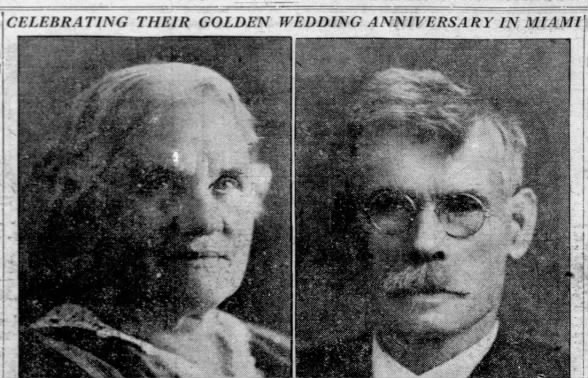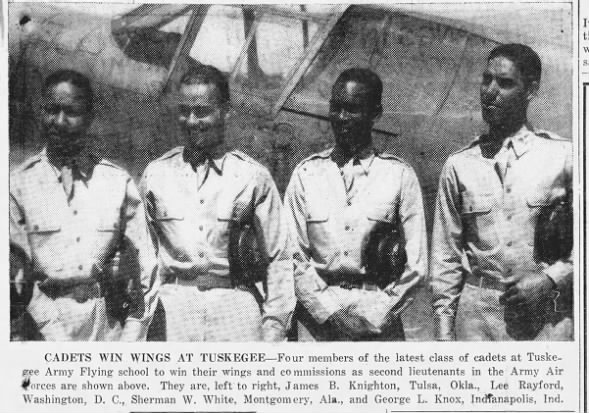 27 Sep 1919, Sat The Star Press (Muncie, Indiana) Newspapers.com
27 Sep 1919, Sat The Star Press (Muncie, Indiana) Newspapers.com
Birth announcements, marriage announcements, and obituaries are invaluable in family history research, but those certainly aren’t the only places in the newspaper to find your ancestors! Here are 5 of our favorite genealogy goldmines.
1. Family Reunion Summaries
Many small-town papers carried news about family reunions held in the area, and they are often full of details that can be crucial to building your family tree. These family reunion summaries frequently listed the names (or first initials) of the family members in attendance. This can be especially helpful in figuring out the married surnames of women in the family and sometimes their unmarried (maiden) names as well. Some of these lists of names can be quite lengthy and include grandparents, aunts, uncles, cousins, and more.
In other instances, names of those in attendance might not be mentioned, but often the number of people is. So if the article says 5 children and 15 grandchildren were at the reunion, check your family tree and see if everyone is accounted for! These summaries sometimes also remark on absences or deaths in the family.
Family reunion summaries also may mention where family members were visiting from, providing inspiration for localities to continue your search in. And if it’s mentioned that this was the 5th annual family reunion, you know to go back to see if there were newspaper reports on the previous 4!
Especially wonderful about family reunion news is that they sometimes include group photos of the whole family, or even a 4- or 5- “generation” photo!
 21 Oct 1923, Sun The Anaconda Standard (Anaconda, Montana) Newspapers.com
21 Oct 1923, Sun The Anaconda Standard (Anaconda, Montana) Newspapers.com
2. Anniversary Announcements
When a couple celebrated a major wedding anniversary, such as their 25th or 50th, an announcement was sometimes placed in the paper to celebrate—and depending on the time period, they were frequently accompanied by a photo of the couple!
Types of information you can learn may include the couple’s birthdates, marriage date and marriage location, the woman’s unmarried (maiden) name, and how many children and grandchildren they have. You may find out where they were employed, what organizations or church they were members of, and their current and past places of residence.
But it doesn’t always stop there. Some of these announcements are quite lengthy and can read almost like a biography, complete with detailed life stories!
 26 Aug 1923, Sun The Miami Herald (Miami, Florida) Newspapers.com
26 Aug 1923, Sun The Miami Herald (Miami, Florida) Newspapers.com
3. Local News-In-Brief Columns
A staple of small- and mid-sized towns starting around the 1880s, these columns went by a variety of names and descriptions, such as “local happenings,” “personal paragraphs,” “society notes,” “items of interest,” and “brevities”—just to name a few.
They were essentially the social media of their day and captured the doings of local residents—including illnesses and injuries, anniversaries, birthdays, business ventures, local anecdotes and events, and more! They are chock full of the details of residents’ day-to-day lives, both big and small.
And not only did these columns provide news of what people in town were up to, they also sometimes included updates on people who had moved out of town!
4. Travel & Visitor Updates
Accompanying (or sometimes mixed in with) the news-in-brief columns were updates on the vacations and travels of residents, as well as news of what visitors were currently in town.
Although these updates are usually just a sentence or two long, there is so much that can be learned from them! This includes the locations various family members were living, who was related to who and how, dates of weddings or funerals in the family, the married surnames of daughters, the names of sons-in-law, and so on.
 24 Dec 1927, Sat Honolulu Star-Bulletin (Honolulu, Hawaii) Newspapers.com
24 Dec 1927, Sat Honolulu Star-Bulletin (Honolulu, Hawaii) Newspapers.com
But keep in mind that newspapers didn’t always mention visitors by name, sometimes merely saying that so-and-so’s brother was in town for the week. But if you’re paying attention, you might catch that the nameless brother mentioned in the article is actually the ancestor you’ve been looking for!
Travel news can also give you clues to more locations to search for your ancestor in. For example, if a brief piece of travel news mentions that your ancestor from Indiana is visiting a cousin in New York for the summer, you now know to search for that ancestor in New York papers as well!
5. Soldier News & Letters
Many of us have ancestors who served in one of the two World Wars or another conflict. Newspapers published during wartime often published news about locals who had recently enlisted, been discharged, or been wounded or killed.
Papers can also provide information on which unit your family member served in. And once you know that, you can use those details to expand your search and potentially learn where your soldier was deployed and what battles they participated in.
 30 May 1942, Sat Southeast Air Corps Training Center News (Montgomery, Alabama) Newspapers.com
30 May 1942, Sat Southeast Air Corps Training Center News (Montgomery, Alabama) Newspapers.com
Newspapers also often printed letters that soldiers had sent home, and these are an incredible treasure if you find one written by a veteran in your family. But even if you don’t, a letter written by someone serving in the same unit as your family member can reveal what your own ancestor’s experience may have been like.
And remember: When searching for information on a person’s military service in newspapers, don’t limit your search to the wartime years. Many veterans didn’t share their stories until long after they served.
***
Have you found an ancestor mentioned in an unexpected part of the newspaper? Tell us about it in the comments!
Get started searching for your ancestors on Newspapers.com™! And follow us on Facebook, Twitter, and Instagram for more content like this!


Im joni gomes
yes i going to canda